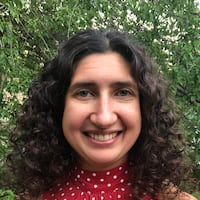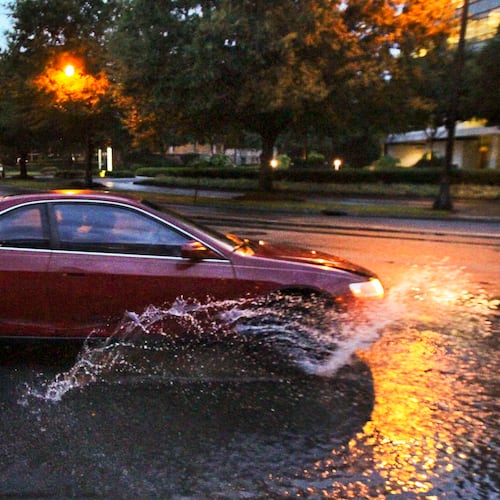As the coronavirus pandemic spread throughout Georgia, 17-year-old Cole Brown and his family decided he’d finish his South Gwinnett High School career from their house near Loganville.
Brown’s parents work at skilled nursing and assisted living facilities, returning to a house that includes elderly relatives.
“We were up close and personal with COVID and we just felt uncomfortable with him going to school,” said Tracy Mitchell-Brown, his mother. “We felt that it was too risky.”
They are among thousands of Black families in metro Atlanta who chose to remain in virtual learning this year, even after many white peers began returning to classrooms.
As school buildings gradually reopened, Black and Asian American students were more likely to stay home, according to data obtained by the Atlanta Journal-Constitution through open-records requests. For their parents, the decision often came down to one concern: Safety.
They wanted to keep their children and families healthy and felt a responsibility to help curb the spread of the coronavirus in the larger community. Some parents distrusted school systems and worried districts couldn’t protect students and teachers. Others discovered their children excelled in online classes and determined it wasn’t worth the risk to go back.
The result is a stark racial difference, that reflects national trends, between who is learning in-person and who is not.
In Atlanta Public Schools, where the majority of students are Black, just over a third of Black students registered for in-person learning at the district’s traditional, non-charter schools for the final nine weeks of the year. That’s compared to nearly two thirds of white students who opted to return, according to APS numbers.
Fulton, Gwinnett and Cobb reported similar trends. Data shows about 70% of white students in those districts chose to learn in-person during the second semester.
But they were joined by less than a quarter of Fulton’s Asian American students and only 37% of Black students as of March. In Gwinnett, only about a third of Asian American students were learning in-person this spring and not quite half of all Black students.
The gap also is evident in a recent U.S. Department of Education survey of several thousand schools in nearly every state. It found just over half of the nation’s white fourth-graders were attending school in-person full-time as of February, compared to 15% of Asian American and 30% of Black students.
The full impact from children spending more than a year in online classes is still unknown.
As schools prepare for many students to return in August, experts said they’ll need to assess where virtual learners are academically. Schools must support those who have not learned as much or whose struggles predate the pandemic.
“One of the questions education has to grapple with nationally is: What are we prepared to do and (for) how long,” said Sekou Biddle, the United Negro College Fund’s vice president for advocacy and programs.
Choosing virtual
South Gwinnett High School, where three quarters of students are Black, had one of the lowest in-person return rates this year in Gwinnett County Public Schools.
Mitchell-Brown said many parents in their predominantly Black neighborhood kept their children home to protect high-risk elderly relatives in multi-generational households.
Credit: Ben Gray
Credit: Ben Gray
Even fewer of Gwinnett’s 20,000 Asian American students returned to classrooms.
Ahmad Yaqoob, who is Pakistani American, did his senior year online at Peachtree Ridge High School, mainly because he lives with an older sister with spina bifida.
Teenagers are careless about washing hands and wearing masks and teachers are too overextended to police hygiene all the time, said Ahmad Yaqoob’s mother, Rehmat Yaqoob.
Her son was used to learning from home: from fourth to eighth grade he was homeschooled while he memorized the Qur’an, the Muslim holy book. She teaches online Qur’an classes and also ascribed her family’s caution to a teaching of the Muslim prophet Muhammad:
“When you hear about a plague in any land, then do not enter it, and if plague outbreaks in your land, then do not leave your land.”
Credit: Alyssa Pointer / Alyssa.Pointer@ajc.com
Credit: Alyssa Pointer / Alyssa.Pointer@ajc.com
Mumtaz Ishaque, who is Pakistani American, has four children in Gwinnett schools and let the oldest decide whether to attend Peachtree Ridge in person. Ishaque’s daughter went there briefly, but then switched back to virtual learning, saying the school was crowded and students were taking off masks in the halls, hugging and kissing.
Ishaque is an optometrist and many of her Asian American friends are doctors.
“I know how diseases work, I know how viruses work and I just wanted to protect my children from it,” Ishaque said. “I just feel that we should be looking out for other citizens.”
Similar considerations factored into the decision made by Jennifer Rogers-Givens, a Black mother in Atlanta. Her children are enrolled in four APS schools, both charter and district-run. Returning too soon “puts the entire Atlanta community at risk for no reason,” she said.
“For Black and brown families, there are so many other stressors that are also going on that play into your mental psyche. This is just adding another layer of something that you have to be thinking about and worrying about,” she said.
She watched as virus variants spread. She monitored the district’s rollout of mitigation measures, which she found rushed and reactive.
“I don’t feel like it’s safe,” she said, of returning to classrooms in March. “I don’t trust the school system. I also don’t trust the state.”
COVID-19 has hit Black communities harder than others, making the threat “less abstract and more concrete and personal,” said Biddle, of UNCF.
This spring, Dr. Markesha Daniel’s daughter wanted to switch from online to in-person learning for the last nine weeks of her freshman year at North Atlanta High School.
But case numbers still weren’t low enough to satisfy Daniel. Her two children plan to finish the year the way they started it: virtually.
As a Black physician, Daniel wrestles with racial disparities in health care, gaps that the pandemic further exposed.
“I think that there’s real fear, and the risk tolerance among Black and brown families is just different,” she said.
Rashida Parrish’s son will complete his first year at Atlanta’s Sutton Middle School online. She’s not surprised that many other Black families made the same choice, even though virtual learning can be difficult to juggle alongside work and other responsibilities.
“I think it’s important to again challenge the narrative that, especially in Atlanta, that Black and brown parents wouldn’t have the means or the wherewithal to keep their children home,” she said.
She couldn’t risk exposing her asthmatic son to the virus. She also worried about educators who had to teach in-person before they could be vaccinated.
Many Korean American families Julia Oh knows kept their children home at first because they compared the United States’ pandemic response unfavorably to Korea’s. But slowly, children started to come back to Parsons Elementary in Gwinnett, which has a Korean dual language program.
Oh, who is Korean American, picked virtual learning for her daughter, though she will attend next year in person.
“Now we think we are too conservative and we are maybe too afraid,” Oh said. “I think we are the last family that are keeping our child at home.”
Data specialist Jennifer Peebles contributed to this article.
Keep Reading
The Latest
Featured


